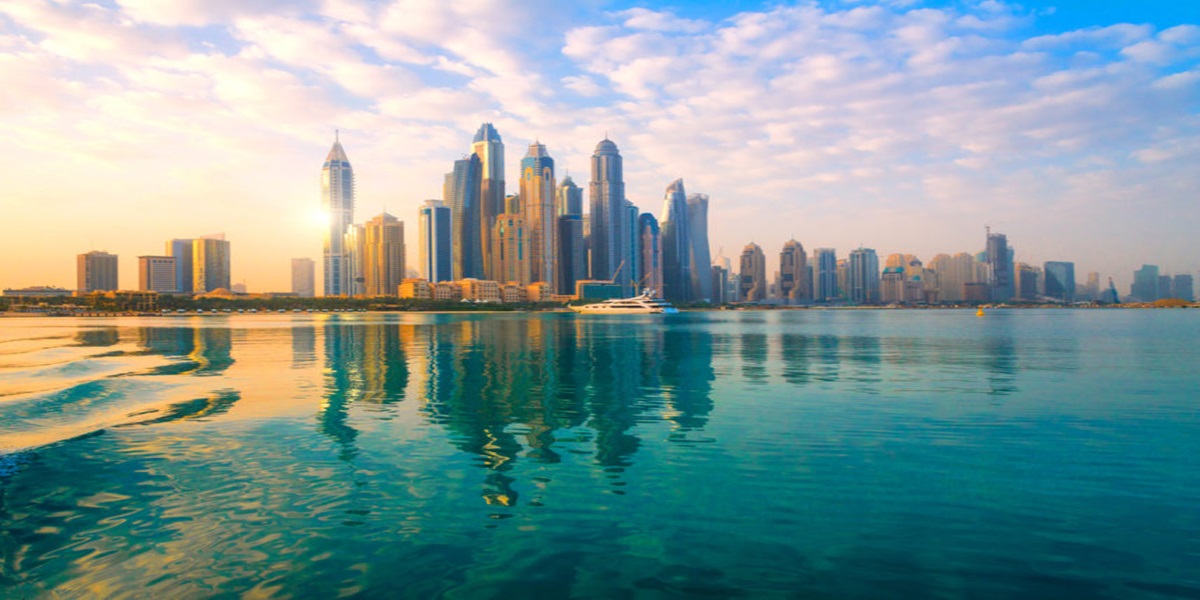Sharjah, the cultural capital of the UAE, is rapidly gaining recognition as a unique and enriching travel destination. While often overshadowed by its glitzy neighbours, Sharjah offers a different allure. The place draws visitors with Sharjah visas for its deep-rooted heritage, vibrant arts scene, and serene landscapes.
In 2023, Sharjah welcomed over 1.8 million tourists, a significant increase fuelled by its expanding range of cultural festivals, family-friendly attractions, and historical sites. The Sharjah Art Biennial, one of the most prestigious art events in the Middle East, attracts thousands of international visitors, contributing to the Emirate's growing reputation as a hub for arts and culture.
Sharjah's appeal is further enhanced by its accessible visa policies, which include options like the UAE's 30-day and 90-day tourist Sharjah visas, facilitating visits from a wide range of countries. The Sharjah Commerce and Tourism Development Authority (SCTDA) has proactively promoted the Emirate's unique offerings, from the Sharjah Desert Park to the Heart of Sharjah, a restoration project reviving the area's historic architecture.
Read More: A Guide to 30 Days Tourist Visa in Dubai
As Sharjah invests in its tourism infrastructure, it is poised to attract a broader audience, including cultural explorers, families, and eco-conscious travellers. This blog will discuss how tourism has flourished in Sharjah and the best places you can visit!
Tourism Statistics of Sharjah: Last Year Overview
Sharjah, the cultural capital of the UAE, continues to be a top destination for tourists. In the last year, the Emirate witnessed significant growth in its tourism sector, reflecting its diverse offerings and strategic efforts to enhance its appeal.
Here's a detailed look at the tourism statistics for Sharjah in the last year.
1. Overall Visitor Numbers
- Total Visitors: Sharjah attracted approximately 1.8 million visitors last year, marking a 7% increase compared to the previous year.
- Domestic vs. International Tourists: Most tourists were international, making up 60% of the total visitors, with the remaining 40% being domestic travellers.
- Top Source Markets: Key source markets included India, Russia, Saudi Arabia, and Germany, with a notable increase in tourists from China.
2. Hotel Occupancy Rates
- Average Occupancy Rate: Sharjah's average hotel occupancy rate stood at 70%, and the hotel has steadily recovered after the pandemic.
- Hotel Establishments: Sharjah has 110 establishments, including luxury hotels, resorts, and budget accommodations.
- Average Length of Stay: Tourists stayed an average of 3.5 nights, indicating that Sharjah is becoming a preferred destination for more extended stays.
Read More: A Guide to 60 Days Tourist Visa in Dubai
3. Revenue Generated
- Total Revenue: The tourism sector generated approximately AED 2.5 billion in revenue, a 10% increase from the previous year.
- Contribution to GDP: The tourism sector's contribution to Sharjah's GDP increased to 9%, highlighting its growing importance in the Emirate's economy.
- Average Spend Per Visitor: The average spend per visitor was estimated at AED 1,800, including accommodation, dining, and leisure activities.
4. Top Attractions and Cultural Sites
Most Visited Attractions:
- Al Noor Island: Known for its stunning landscapes and butterfly houses, this site saw over 200,000 visitors.
- Sharjah Museum of Islamic Civilization: Attracted over 150,000 tourists, showcasing Sharjah's rich cultural heritage.
- Mleiha Archaeological Centre: This UNESCO World Heritage site drew 100,000 visitors, offering a glimpse into ancient Arabia.
Cultural Festivals:
- Sharjah International Book Fair: The event attracted over 2.5 million visitors, including participants from over 100 countries.
- Sharjah Light Festival: Its stunning light shows and cultural performances attracted over 500,000 visitors.
Read More: Dubai Vacay for Kids- Create Your List of Attractions to Visit
Sharjah Tourism: Peak Tourist Seasons and Visitor Trends
With its rich cultural heritage and diverse attractions, Sharjah experiences a steady flow of tourists throughout the year. However, specific periods see a significant influx of visitors with Sharjah visas due to favourable weather conditions, cultural events, and festivals. Here's a detailed look at when tourists typically visit Sharjah:
1. Peak Tourist Season: November to March
- Weather: The period from November to March is considered the peak tourist season in Sharjah. During these months, the weather is mild and pleasant, with daytime temperatures ranging between 20°C to 25°C (68°F to 77°F). The cooler climate makes it an ideal time for outdoor activities, sightseeing, and exploring the Emirate's natural and cultural attractions.
Read More: Adventure Activities in UAE: Experience Something Extraordinary
Festivals and Events:
- Sharjah International Book Fair (November): One of the largest book fairs in the world, this event draws millions of visitors, including literary enthusiasts, authors, and publishers from around the globe.
- Sharjah Light Festival (February): This vibrant festival transforms the Emirate's landmarks with spectacular light displays, attracting large crowds of tourists and locals alike.
- Sharjah Heritage Days (March-April): Celebrating the rich cultural heritage of the UAE, this festival includes traditional music, dance, crafts, and cuisine, making it a popular attraction for culture enthusiasts.
2. Shoulder Season: April to June and September to October
- Weather: April to June and September to October are shoulder seasons in Sharjah. During these months, the weather transitions from more relaxed to warmer conditions. Temperatures can range between 25°C to 35°C (77°F to 95°F), making it still comfortable for tourists, especially those interested in cultural events and indoor activities.
Visitor Trends:
- Cultural and Educational Tourism: Many tourists visit during these periods to explore Sharjah's museums, art galleries, and cultural centres. The Emirate's reputation as the cultural capital of the UAE makes it a year-round destination for those interested in history, art, and Islamic culture.
- Ramadan (Varies Each Year): Ramadan often falls within these months, depending on the Islamic calendar. While the pace of life slows down during this holy month, many visitors come to experience the cultural and religious practices, including Iftar meals and evening activities.
3. Low Season: July to August
- Weather: July and August are the hottest months in Sharjah, with temperatures often exceeding 40°C (104°F). The extreme heat and humidity make outdoor activities less appealing, leading to a drop in tourist numbers.
Visitor Trends:
- Indoor Attractions: Tourists visiting during the summer often focus on indoor attractions such as the Sharjah Museum of Islamic Civilization, the Sharjah Aquarium, and shopping malls. Air-conditioned environments provide a respite from the heat while allowing visitors to enjoy the Emirate's cultural and leisure offerings.
- Special Promotions: Many hotels and resorts offer special summer promotions and discounts during this period, attracting budget-conscious travellers and those looking for a quiet retreat.
Sharjah Tourism: What can you expect from Sharjah?
As the UAE's cultural capital, Sharjah has many historical places to explore. You will immerse yourself in its rich history, stunning landscapes, and vibrant arts scene.
Read More: Top Places to Visit in Dubai
Here's what you can look forward to when planning your visit:
- Explore the Museums and Historical Sites.
Sharjah is renowned for its extensive museum collection that offers profound insights into the Emirate's history, culture, and arts. The Sharjah Museum of Islamic Civilization, Art Museum, and Al Noor Island are must-visit spots for history enthusiasts. These sites showcase the Emirate's past and highlight its ongoing efforts to preserve and promote its cultural heritage. With the Sharjah Visa, you can easily explore the place and gain knowledge for a lifetime.
- Wander Through Traditional Souks and Markets
A visit to Sharjah is complete with experiencing the traditional markets, where you can find everything from spices and perfumes to handmade crafts and textiles. The Central Souk and Al Arsah Souk are among the most famous, offering a glimpse into the Emirate's trading heritage. The authentic atmosphere of these markets is a treat for any traveller, and with the convenience of obtaining a Sharjah Visa online, your shopping spree is just a few clicks away.
- Marvel at the Architectural Wonders
Sharjah is home to some of the most stunning examples of Islamic architecture. The Al Noor Mosque and King Faisal Mosque are masterpieces offering visitors peace and spiritual reflection. These structures are not only places of worship but also symbols of the Emirate's commitment to preserving its cultural identity. Anyone can visit these places with their Sharjah visa. However, remember to dress modestly and cover your hair and head to show respect.
Read More: How to Apply to a Visit Visa for Dubai from India?
- Experience the Natural Wonders.
Sharjah is not just about history and culture; it also boasts breathtaking natural landscapes. The Mleiha Archaeological Centre offers a unique blend of history and adventure, where you can explore ancient ruins and go dune bashing in the surrounding desert. For nature lovers, the Wasit Wetland Centre and Kalba Conservation Reserve provide a serene escape into Sharjah's efforts to preserve its natural habitats.
- Enjoy the Arts and Cultural Festivals.
Sharjah is a hub for arts and culture, hosting numerous festivals and events annually. The Sharjah Biennial, Sharjah International Book Fair, and various cultural events draw visitors from worldwide with Sharjah visas eager to experience the Emirate's vibrant creative scene. You can plan your trip during such events, generally in winter (November – March). This is the peak season for visiting Sharjah, so make sure you make your bookings in advance to avoid last-minute chaos.
Read More: Plan your vacations- Abu Dhabi Events and Festivals
- Culinary Delights
Sharjah offers a diverse culinary scene, reflecting its multicultural population. From traditional Emirati dishes to international cuisine, the food in Sharjah is a journey. Try local delicacies like Machbous, Harees, and Luqaimat. Just stroll to the streets of Sharjah and enjoy the delicious street food with your Sharjah Visa.
Sharjah's Sustainable Tourism Initiatives
Sharjah is not only focused on attracting tourists but also on preserving its natural and cultural heritage. The Emirate has implemented several sustainable tourism initiatives to protect its environment and promote responsible tourism. Projects like the Wasit Wetland Centre and the Kalba Conservation Reserve are prime examples of Sharjah's commitment to sustainability. Last year, 56% of the Sharjah visa holders preferred to visit these beautiful places.
Read More: 15 Best Places to Visit in Dubai with Family in 2024
At the Wasit Wetland Centre, a significant focus is placed on habitat restoration. The project involves extensive efforts to rehabilitate wetlands that have been degraded over time. This includes reintroducing native plant species, managing water levels to mimic natural conditions, and creating a sanctuary for over 200 species of migratory birds. The Centre also implements rigorous monitoring programs to track the ecosystem's health, ensuring the balance is maintained, and the wetland remains a thriving environment for wildlife.
Similarly, the Kalba Conservation Reserve is dedicated to preserving the biodiversity of its coastal and mangrove ecosystems. This involves protecting the area from urban encroachment through strict zoning laws and developing eco-friendly infrastructure that minimises human impact. The Reserve also engages in active conservation programs, mainly focusing on endangered species such as the Arabian leopard and the hawksbill turtle.
These efforts have not gone unnoticed, with Sharjah receiving recognition on international platforms for its sustainable tourism practices. The Emirate's focus on eco-friendly initiatives is attracting a growing number of environmentally conscious travellers to apply for Sharjah visas online this year.
Sharjah Tourism: The Impact in 2024
Sharjah has set ambitious goals for 2024 to increase its tourism numbers by 20%. The SCTDA has planned a series of events and festivals that will showcase Sharjah's cultural and artistic heritage, from the Sharjah International Book Fair to the Sharjah Light Festival. Additionally, the Emirate is expanding its hotel and infrastructure projects to accommodate the expected influx of Sharjah visa-holding tourists.
Read More: Everything to Know about Dubai Visa for US Citizens
Regarding economic impact, Sharjah's tourism sector is projected to contribute significantly to the Emirate's GDP, focusing on boosting the local economy through job creation and increased spending in the hospitality and retail sectors. Introducing new flight routes and partnerships with international travel agencies are expected to enhance Sharjah's global connectivity further.
Sharjah Tourism: The Futuristic Goals
Looking ahead, Sharjah is positioning itself as a leading cultural and eco-tourism destination in the Middle East. The Emirate's long-term tourism strategy focuses on sustainable development, with plans to preserve its natural landscapes and cultural heritage while embracing technological advancements. By 2033, Sharjah aims to be a top destination for Sharjah visa-holder travellers seeking an authentic and enriching experience, strongly emphasising community involvement and environmental conservation.
The SCTDA has outlined a vision that includes the development of new tourist attractions, enhancing existing sites, and promoting Sharjah as a family-friendly destination. The Emirate is also exploring opportunities in digital tourism, with plans to introduce virtual reality experiences and innovative tourism solutions that will provide Sharjah visa holders with a seamless and immersive journey.



